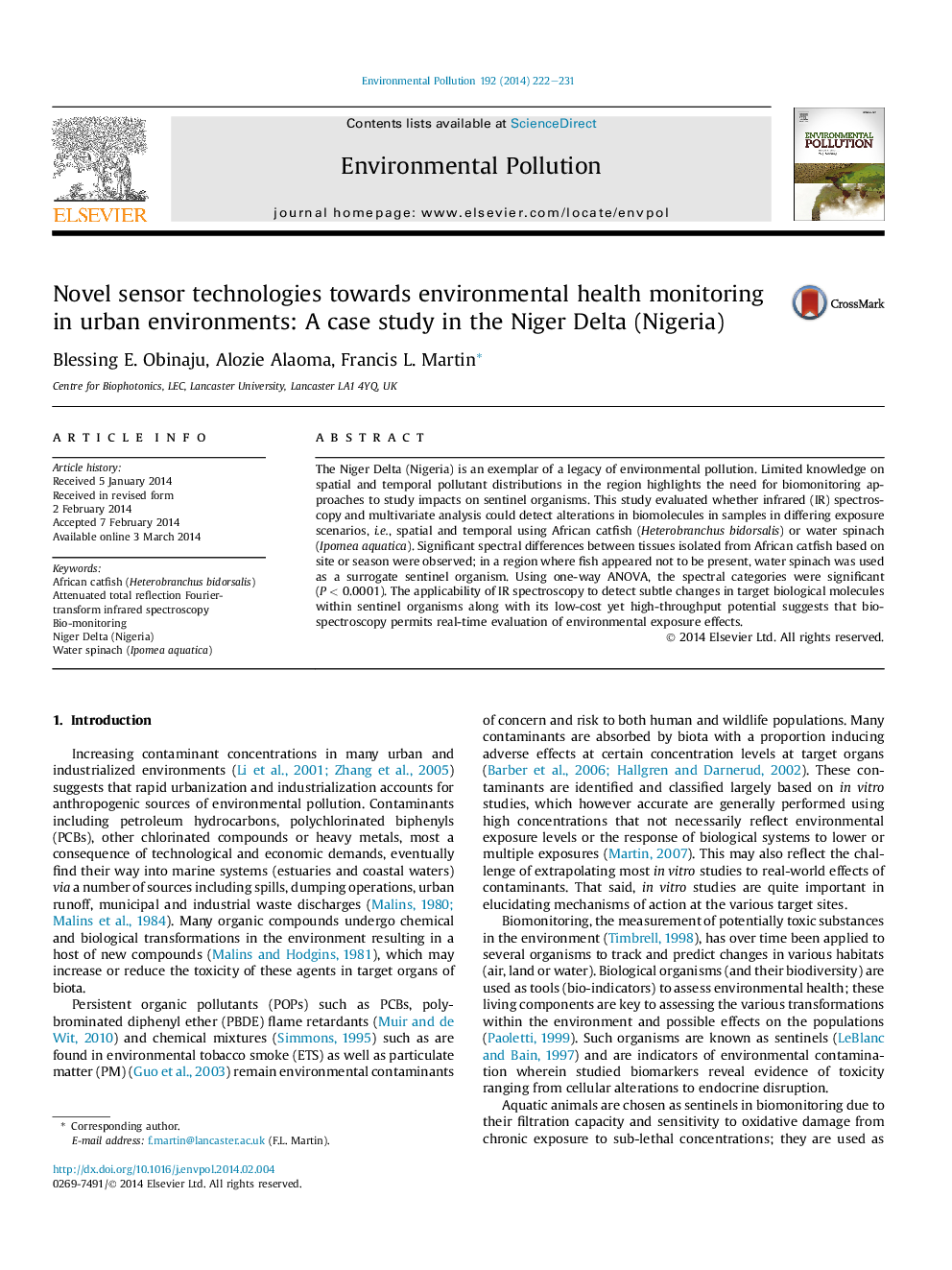| Article ID | Journal | Published Year | Pages | File Type |
|---|---|---|---|---|
| 4424362 | Environmental Pollution | 2014 | 10 Pages |
•Biospectroscopy techniques are applicable as non-destructive biomonitoring tools.•Niger Delta (Nigeria) as a case example of environmental pollution.•IR spectroscopy and multivariate analysis detects exposure-associated alterations.•Spatial and temporal effects detected in tissues of African catfish (H. bidorsalis).•Spectral effect alterations also noted in water spinach (Ipomea aquatica).
The Niger Delta (Nigeria) is an exemplar of a legacy of environmental pollution. Limited knowledge on spatial and temporal pollutant distributions in the region highlights the need for biomonitoring approaches to study impacts on sentinel organisms. This study evaluated whether infrared (IR) spectroscopy and multivariate analysis could detect alterations in biomolecules in samples in differing exposure scenarios, i.e., spatial and temporal using African catfish (Heterobranchus bidorsalis) or water spinach (Ipomea aquatica). Significant spectral differences between tissues isolated from African catfish based on site or season were observed; in a region where fish appeared not to be present, water spinach was used as a surrogate sentinel organism. Using one-way ANOVA, the spectral categories were significant (P < 0.0001). The applicability of IR spectroscopy to detect subtle changes in target biological molecules within sentinel organisms along with its low-cost yet high-throughput potential suggests that biospectroscopy permits real-time evaluation of environmental exposure effects.
